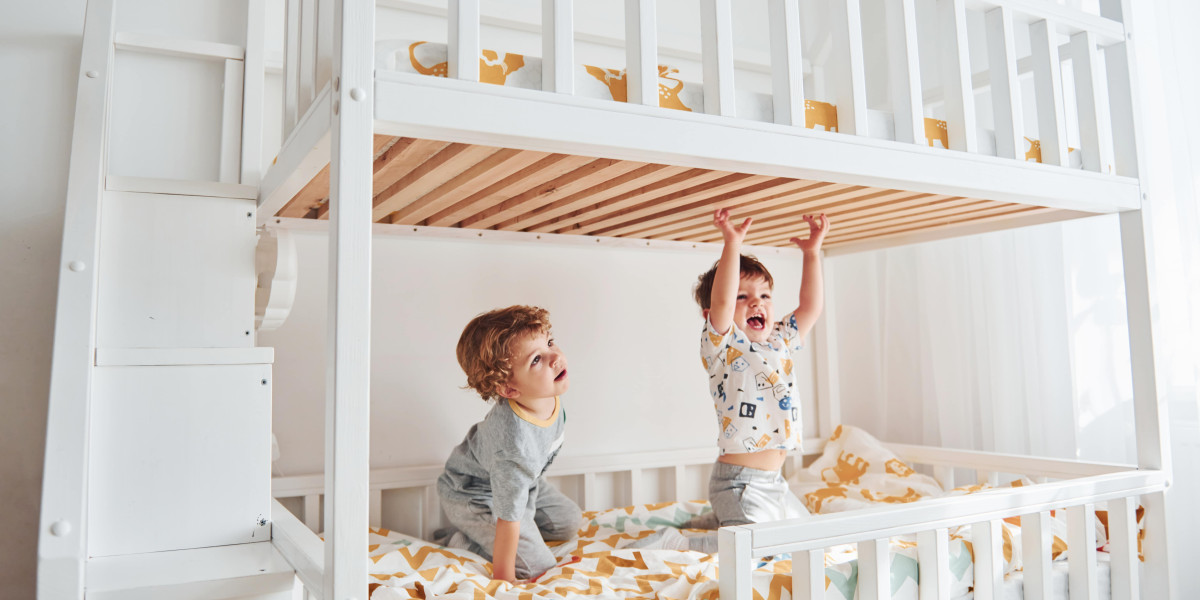The Ultimate Guide to Bunk Beds for Children: Safety, Styles, and Benefits
When it comes to styling a child's room, moms and dads often deal with the dual obstacle of making the most of space while guaranteeing convenience and performance. Bunk beds have become a popular option that deals with these requirements, using not simply sleeping arrangements but also contributing to a room's visual. In this extensive guide, we will look into various aspects of children's bunk beds, focusing on their advantages, security functions, designs, and considerations for moms and dads considering this purchase.
Tabulation
- Benefits of Bunk Beds
- Security Features to Consider
- Types of Bunk Beds
- Design and Style Options
- Maintenance Tips
- Regularly Asked Questions (FAQs)
1. Advantages of Bunk Beds
Bunk beds provide numerous advantages for children and their parents. Here are some key benefits:
Space-Efficiency: Bunk beds are an outstanding solution for smaller sized rooms. By stacking one bed on top of another, more flooring space is available for play, storage, or study locations.
Cost-Effective: When kids share rooms, bunk bed cheap beds can decrease the need for purchasing 2 different beds, hence saving cash.
Cultivates Social Interaction: Bunk beds can help brother or sisters or good friends bond by sharing a space, developing chances for social development.
Fun Factor: The concept of sleeping "up high" includes a lively aspect to bedtime, making the transition to sleeping alone simpler for some children.
Versatile Design: Bunk beds come in different styles, colors, and develops to match any room style, permitting personalization that shows the child's character.
2. Security Features to Consider
Security is paramount when it comes to kids's furniture, particularly in the case of bunk beds. Here are some critical safety features to evaluate:
| Safety Feature | Description |
|---|---|
| Sturdy Construction | Frames made of solid wood or metal are chosen. |
| Guardrails | Should be at least 5 inches high and extend along both sides of the upper bunk. |
| Ladder Design | Ensure ladders are securely attached and have non-slip steps. |
| Mattress Size & & Fit | Must fit comfortably within the frame to avoid gaps. |
| Weight Limit | Constantly comply with the producer's weight limitation recommendations. |
3. Kinds Of Bunk Beds
Bunk beds are available in numerous designs, accommodating numerous needs, choices, and room sizes. Here are some typical types:
Standard Bunk Bed: The most fundamental type, with one bed on top of another.
Loft Bed: Features a high upper bed with space underneath for a desk or play location.
Futon Bunk Bed: Combines a leading bunk with a futon on the bottom, offering flexibility for seating and sleeping.
L-Shaped Bunk Bed: This style has the leading bunk set at a perpendicular angle to the bottom, creating a little corner area.
Triple Bunk Bed: Accommodates 3 children using stacked beds, ideal for large families or slumber parties.
4. Style and Style Options
When it comes to picking a style for children's bunk bed for adults beds, the alternatives are essentially unlimited. Here are some popular designs:
Traditional Style: Often made from wood, these bunk beds include elaborate details and are best for traditional or rustic-themed spaces.
Modern Style: Characterized by clean lines and minimalist designs, contemporary bunk beds can be made of metal or wood.
Themed Bunk Beds: Some brand names provide bunk beds formed like castles, cars and trucks, or play houses, making bedtime less of a chore.
Convertible Bunk Beds: These can be separated into 2 specific beds, offering versatility as children grow.
Colorful Options: bunk beds children's [knowing it] beds in lively colors can include a sense of joy and playfulness to any space.
5. Upkeep Tips
Maintaining a bunk bed is important for longevity and security. Here are some tips:
Regular Inspections: Check for loose screws or bolts every couple of months and tighten them as required.
Cleaning up: Wipe down frames regularly to avoid dust accumulation; consider utilizing a vacuum for hard-to-reach locations.
Mattress Care: Rotate mattresses routinely and use protective covers to lengthen their life.
Expect Wear and Tear: Look for any signs of damage in the wood or metal and think about replacing parts if necessary.
Teach Kids Safety Rules: Encourage children to use ladders properly and guarantee they comprehend the safety features of their bed.
6. Often Asked Questions (FAQs)
Q1: What age is appropriate for oversleeping a top bunk?
A1: Typically, kids aged 6 and older are advised for upper bunk sleeping, as they have the required motor skills to climb safely.
Q2: Do bunk beds come with a mattress?
A2: Most bunk beds are sold as frames just, so you will require to buy bed mattress independently. Ensure that the mattress fits the frame comfortably.
Q3: Can bunk beds be separated later?
A3: Many designs allow conversion into 2 private beds, providing versatility for future needs.
Q4: How can I guarantee my kid's safety on a bunk bed?
A4: Comply with safety standards and make sure guardrails, a durable frame, and a protected ladder remain in location.
Q5: Are there weight limitations on bunk beds?
A5: Yes, constantly inspect the manufacturer's requirements regarding weight limitations to ensure safety.
Bunk beds for kids can serve several purposes while ensuring safety and style. With diverse designs and models readily available on the market, moms and dads can find an unit that not only takes full advantage of bedroom space however likewise shows their kid's distinct tastes. As with any furniture, understanding safety features, upkeep, and how they suit a kid's way of life will guarantee that these beds stay a useful furniture service for several years to come.
Through cautious factor to consider and adherence to security standards, bunk beds can provide a lasting, fun, and functional sleeping solution that kids like.







